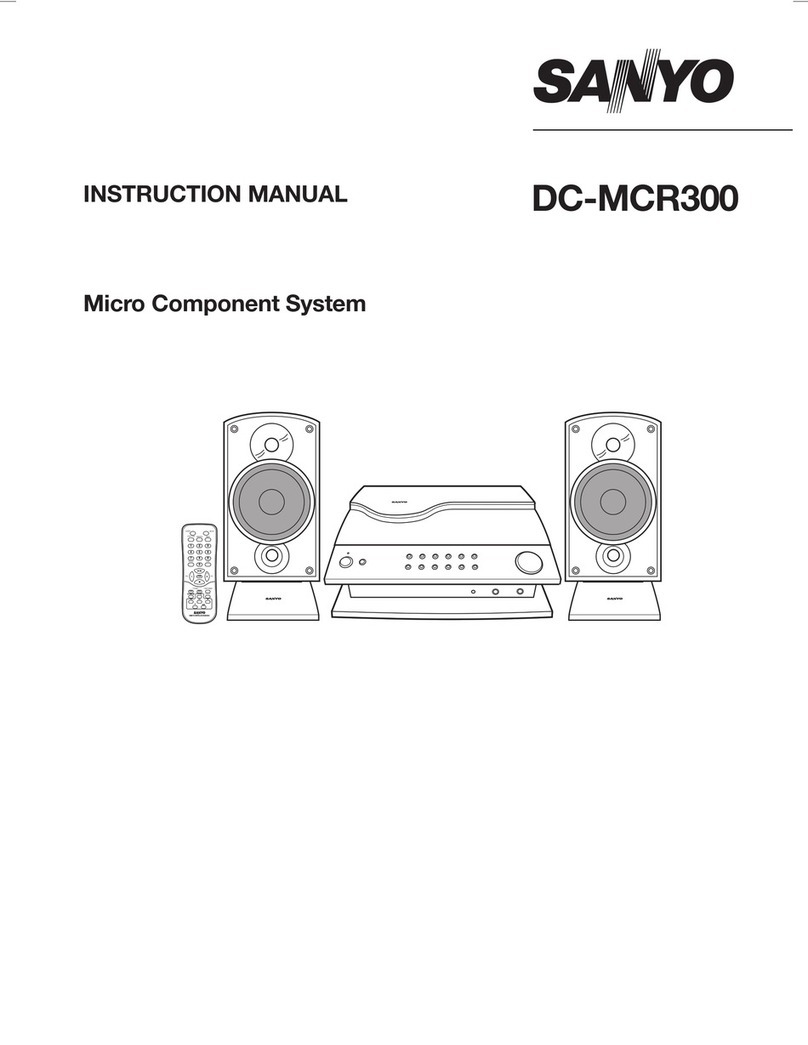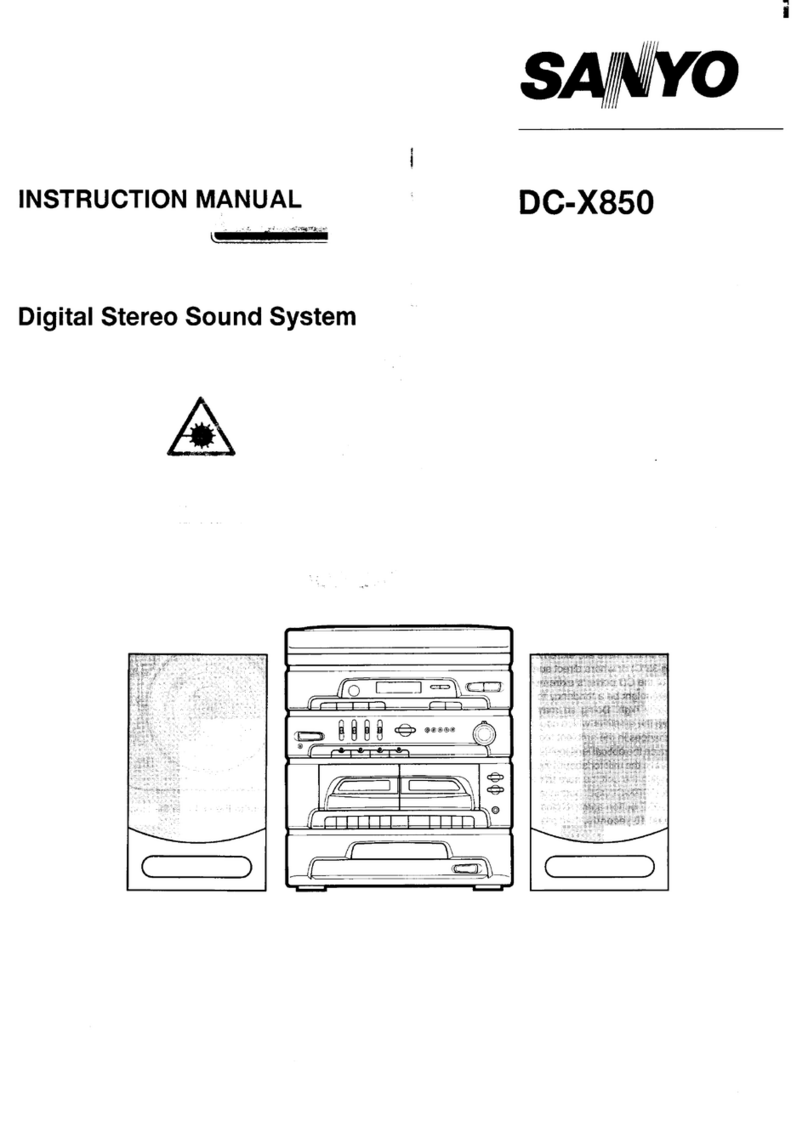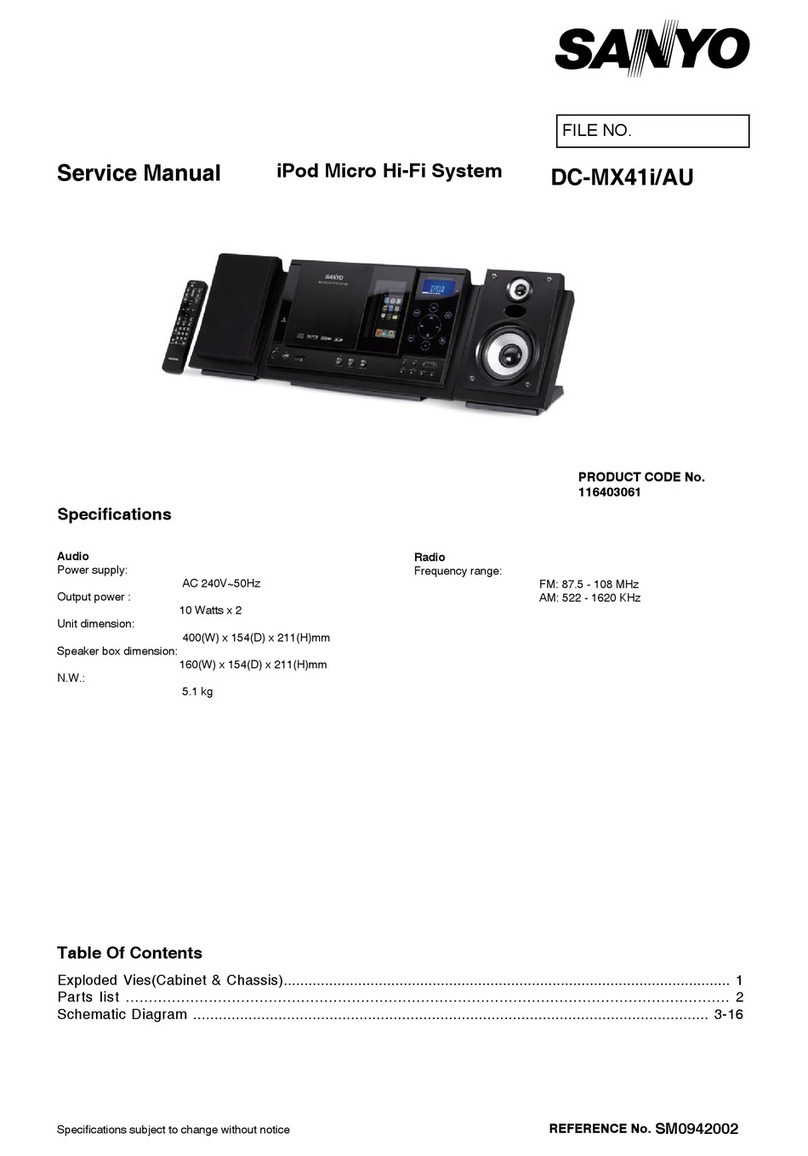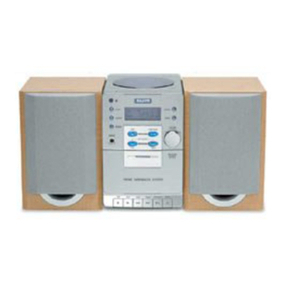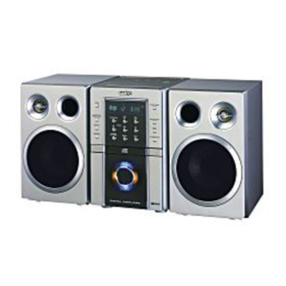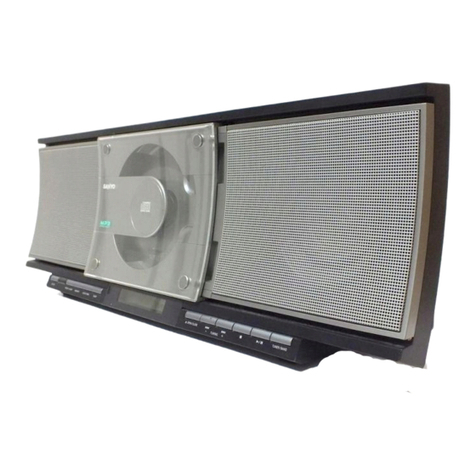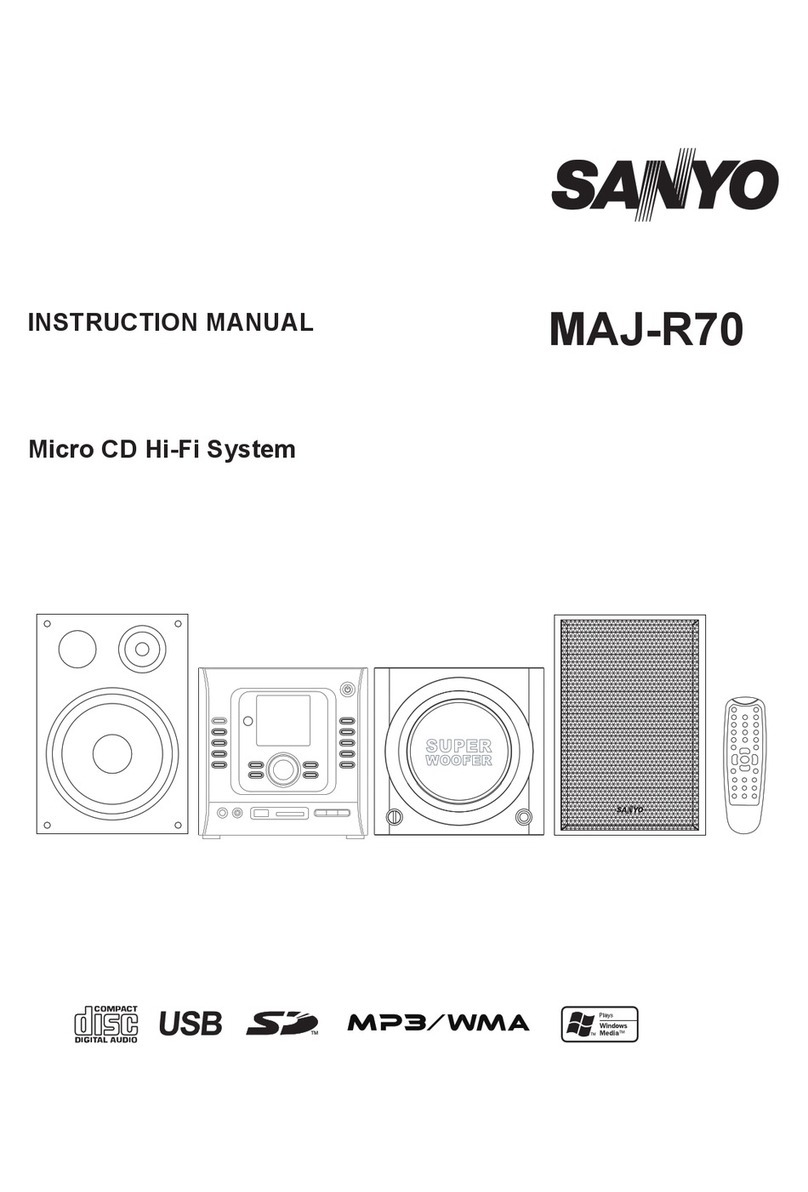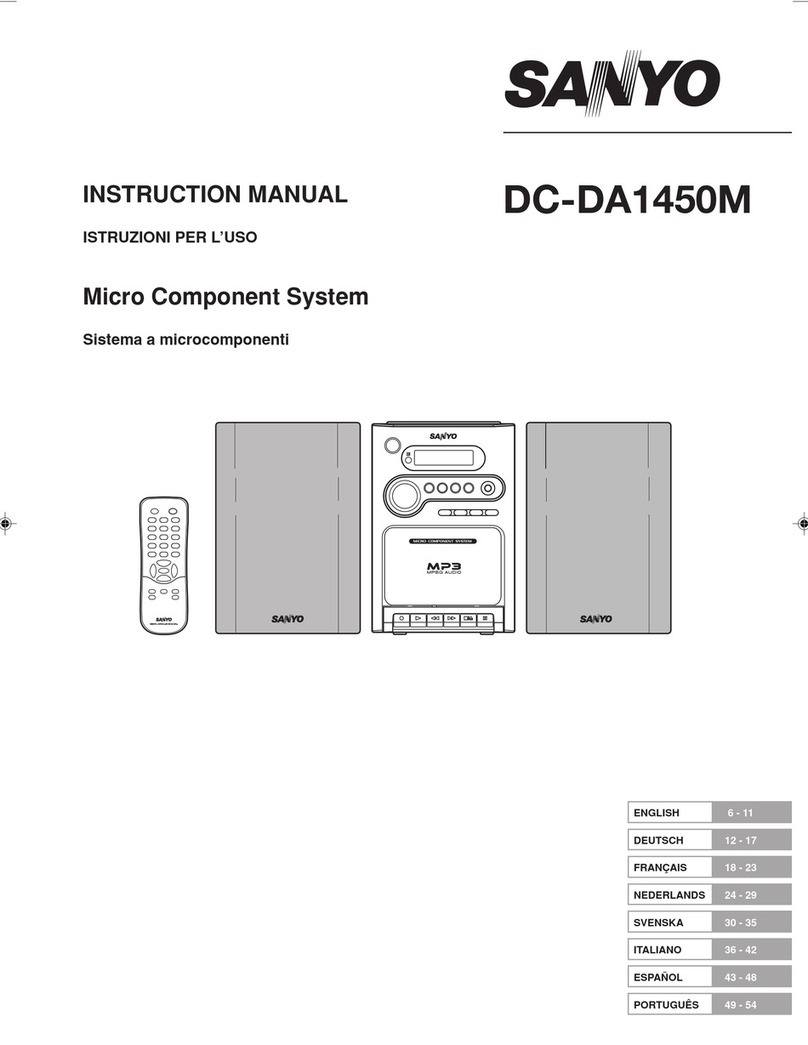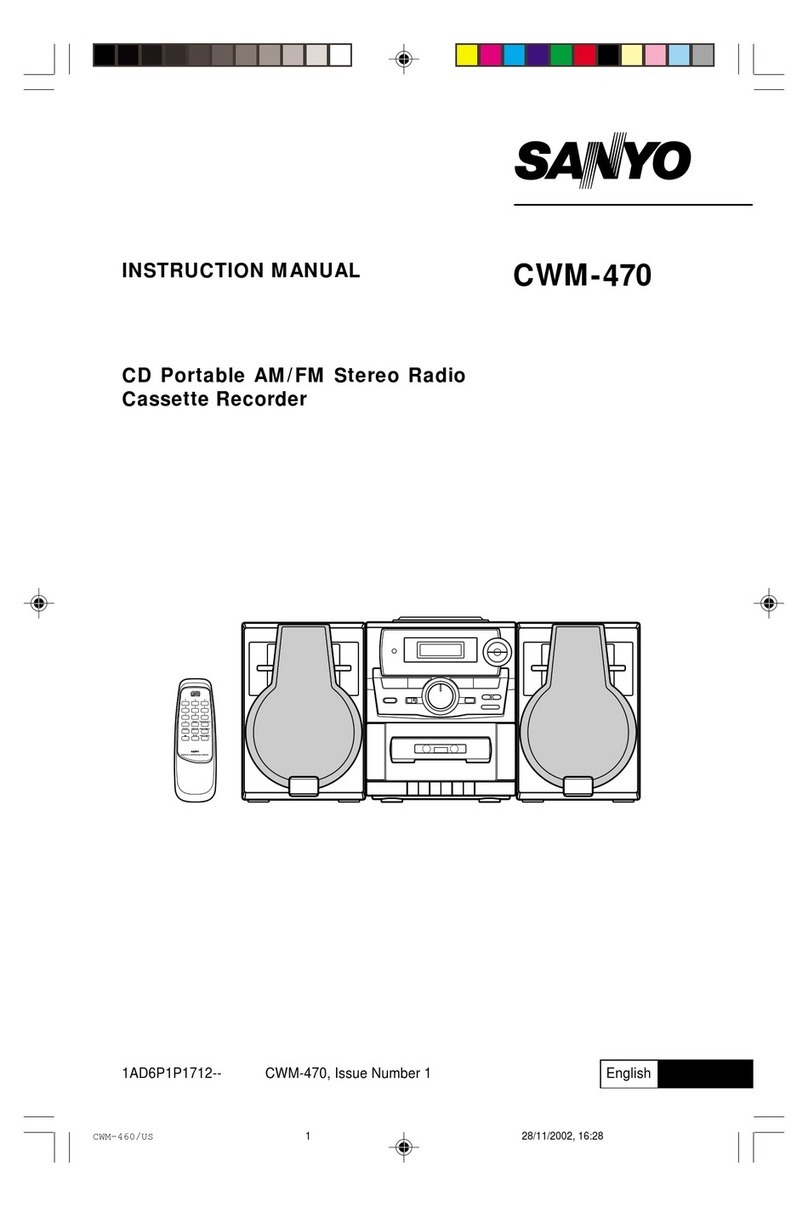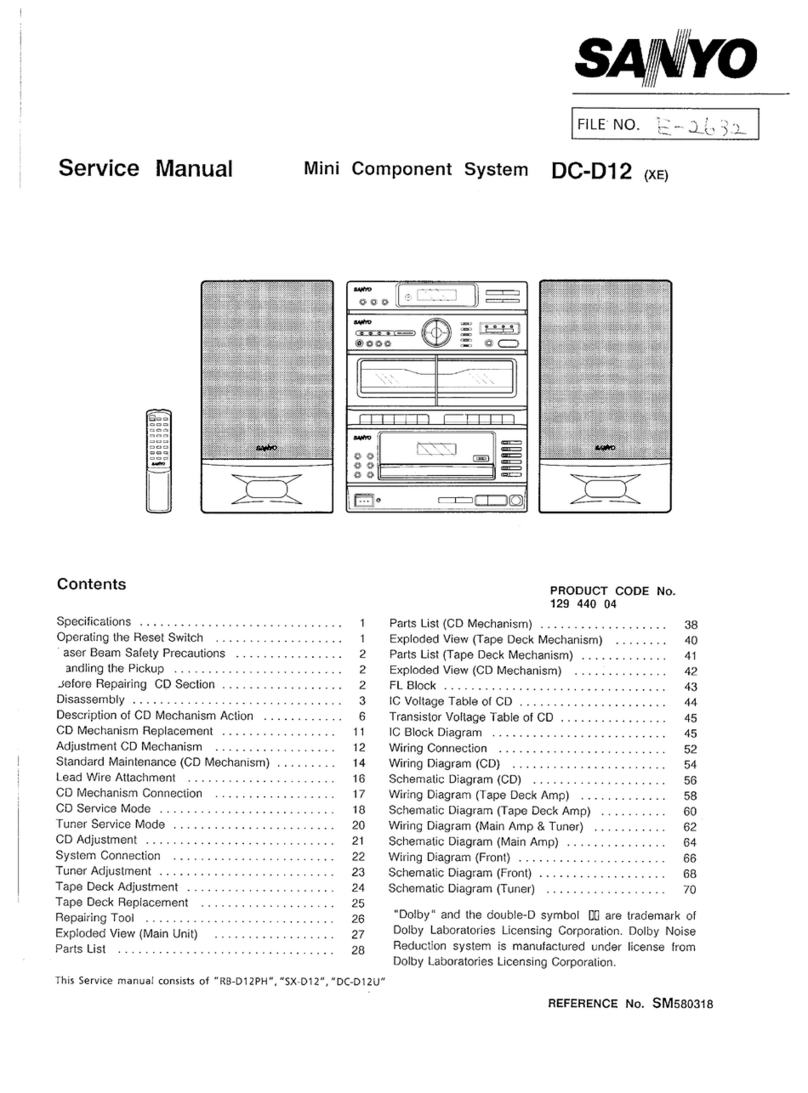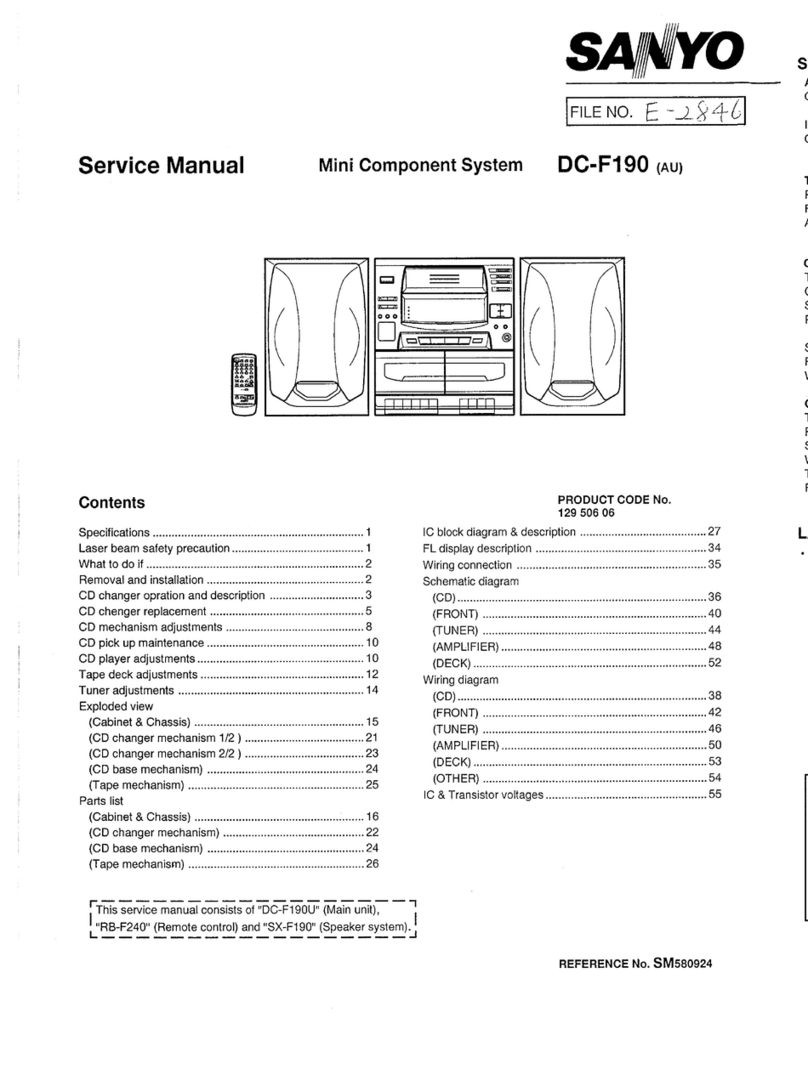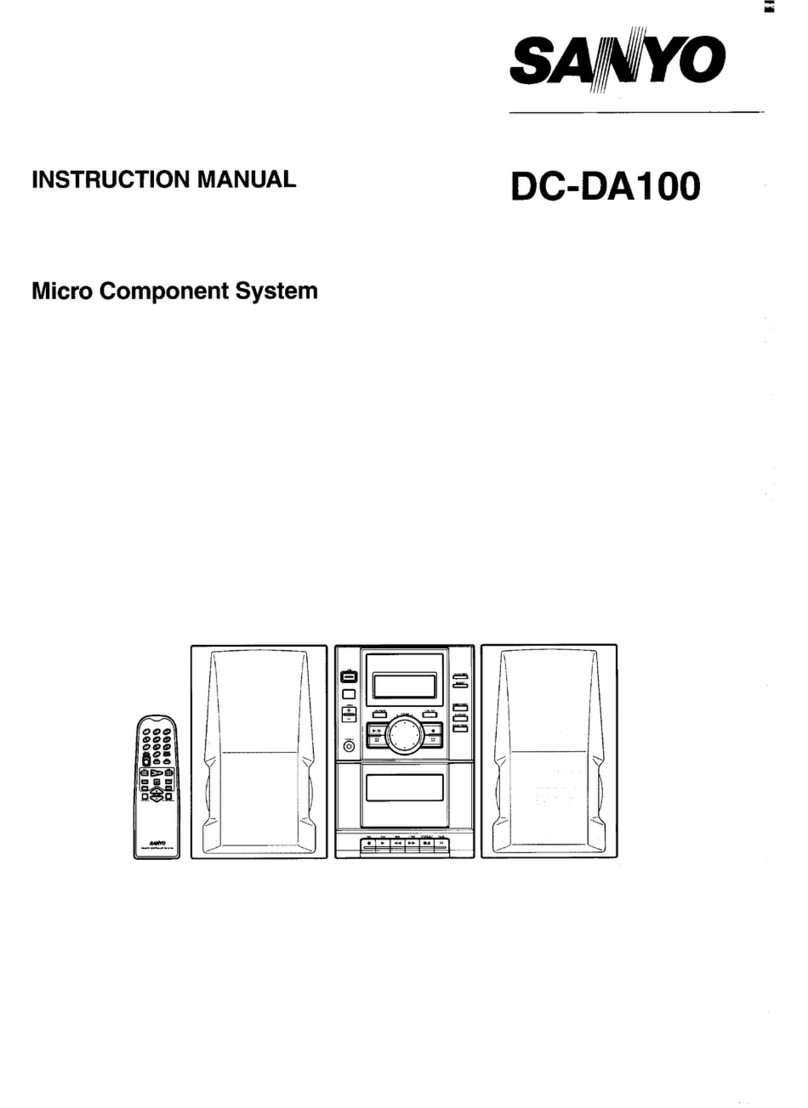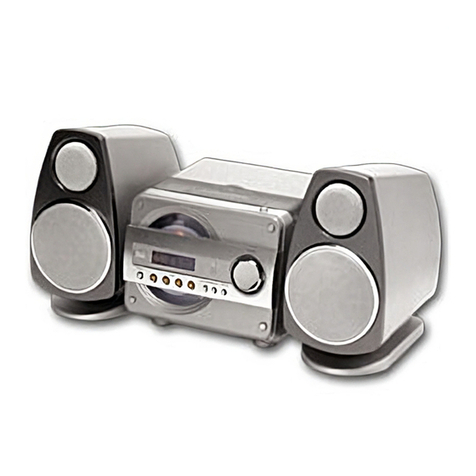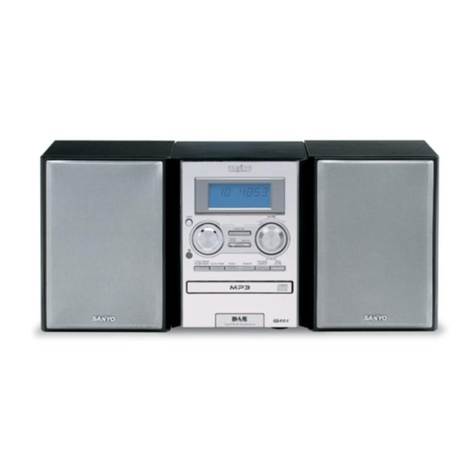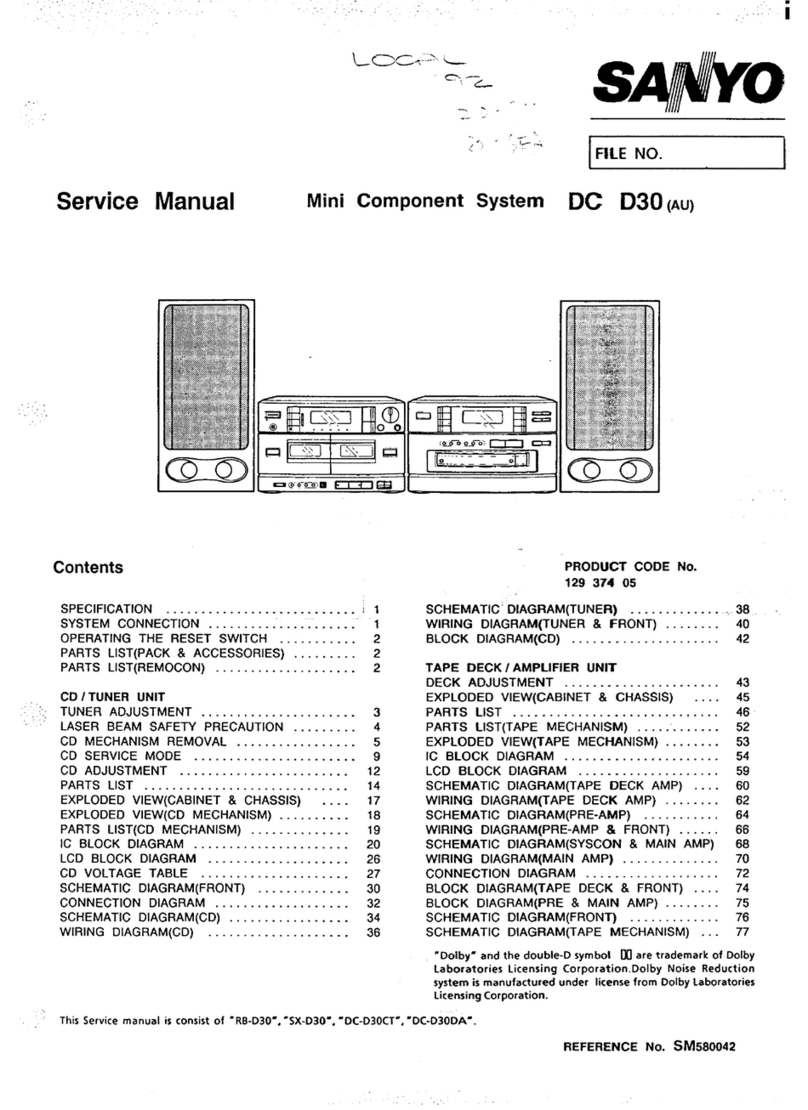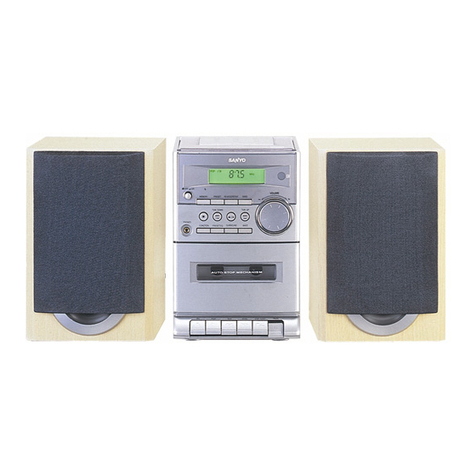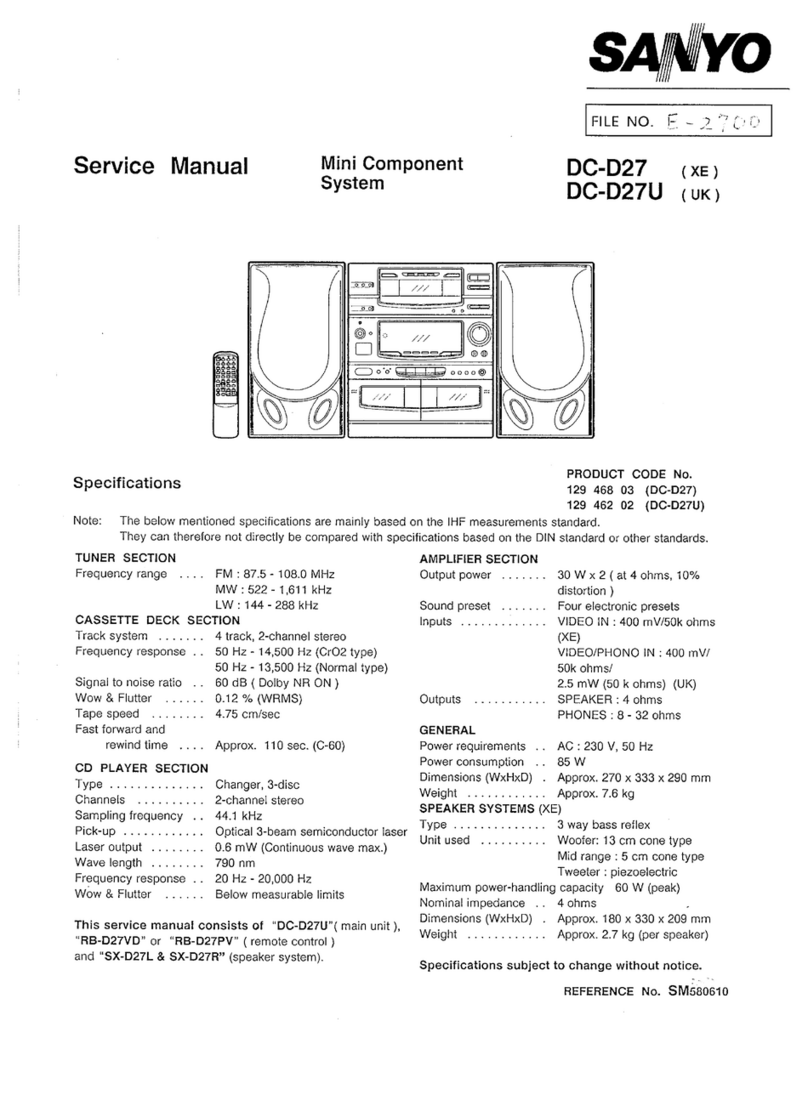BEFORE OPERATION
Turning the power on and off Adjusting the sound quality
Press the POWER switch. The STANDBY indicator goes out. “HELLO” The GRAPHIC EQUALIZER controls (300Hz/1 kHz/1 OkHz) allow the
aPPears on the display, then the function mode appears. sound to be tailored to individual musical preferences or to fit the
To turn off the power, press the POWER switch again. The STANDBY acoustics of the room. Moving the control will adjust the sound level in a
indicator lights. narrow range of musical frequencies.
-When the mains lead is connected to the AC outlet, the STANDBY
indicator lights and the unit will respond to commands from the WHAT TO DO IF ...
remote control. Ifthe operation of the unit or display is not normal or when all the memory
contents are to be cleared, disconnect the mains lead from the AC outlet,
Selecting the function then press the RES~ button (rear of the unit) for 20 seconds or more.
Set the FU~CTION switch to the desired position.
-When the FUNCTION switch is moved from “CD’sto another position, —
CD play stops automatically. .—.—. -.-— .
_— .————— ——.
---”~~
Adjusting the volume
“o
!
_____ &’_- J---
Press the UP or DOWN VOLUME control, or “+” or” - “ VOL control on ,, *$
the remote control. ~
$
Volume position indicators ~
The VOL POSITION indicators show the relative volume position. 1
j
Adjusting the left/right speaker balance
Use the BALANCE control to adjust the left/right speaker balance.
Bass expander system
Press the BASSXPANDER switch to ON to enhance the bass sound.
CD PLAY
Use compact discs bearing the symbol shown below. [n addition to
conventional 12 cm CDs, this system can be used to play 8cm CDs
without an adapter. dliTHE
DIGITAL AUDIO
1.
2.
3.
4,
5.
8,
Set the FUNCTION switch to CD. “NO dlSC” appears on the display.
Press the OPEN/CLOSE switch.
The disc tray slides out and “OPEN” appears on the display.
Place the disc with the label facing up on the disc tray.
For 12 cm CD For 8cm CD
Press the OPEN/CLOSE switch again to close the disc tray.
The total number of tracks and total play time on the disc are
displayed.
Press the PIAY/PAUSE switch.
TRACK 10.01 p
“D” appears, and play starts from the first track. The track number
and elapsed play time for the current track are displayed.
If you press the PLAY/PAUSE switch while the tray is still open, it
will close, and play will begin automatically.
To start play from the desired track, select the track by using the
SKIP/SEARCH switches, then press the PLAY/PAUSE switch.
Press the STOP switch to end disc play.
The total number of tracks and total play time are displayed.
When the last track has been played, the player stops automatically.
When the OPEN/CLOSE switch is pressed during play, play will stop
and the disc trav will slide out.
1L
o
Notes on handling compact discs
Do not expose the disc to direct sunlight, high humidity or high
temperatures for extended periods of time.
Discs should be returned to their cases after use.
Do not apply paper or write anything on the disc surface.
Handle the disc by its edge. Do not touch the playing surface (glossy
side).
Fingerprints and dust should be carefully wiped off the playing
surface of the disc with asoft cloth.
Wipe in astraight motion from the centre to the outside of the disc.
Never use chemicals such as record cleaning sprays, antistatic spray-
er fluids, benzine or thinner to clean compact discs.
Temporarily stopping play
Press the PLAY/PAUSE switch. “D” blinks on the display. To resume
play, press the switch again.
Skip play
To skip to track 6while track 3is playing, press the ~I~SKIP/
SEARCH switch repeatedly until “6” appears in TRACK on the display.
To skip back to track 3while track 6is playing, press the~ /~ SKIP/
SEARCH switch repeatedly until “3” appears.
Search (forward/reverse)
Ifthe w/~or M/44 SKIP/SEARCH switch is pressed during Play,
the player will search at high speed in the forward or reverse direction
while the switch is being pressed. When the switch is released, normal
play will continue.
Introscan
Press the INTRO switch to play the first 10 seconds of each track. “INTRO”
appears on the display.
Press the INTRO switch again to return to normal play.
If the INTRO switch is pressed during normal play, introscan will start
with the next track on the disc.
-5-
